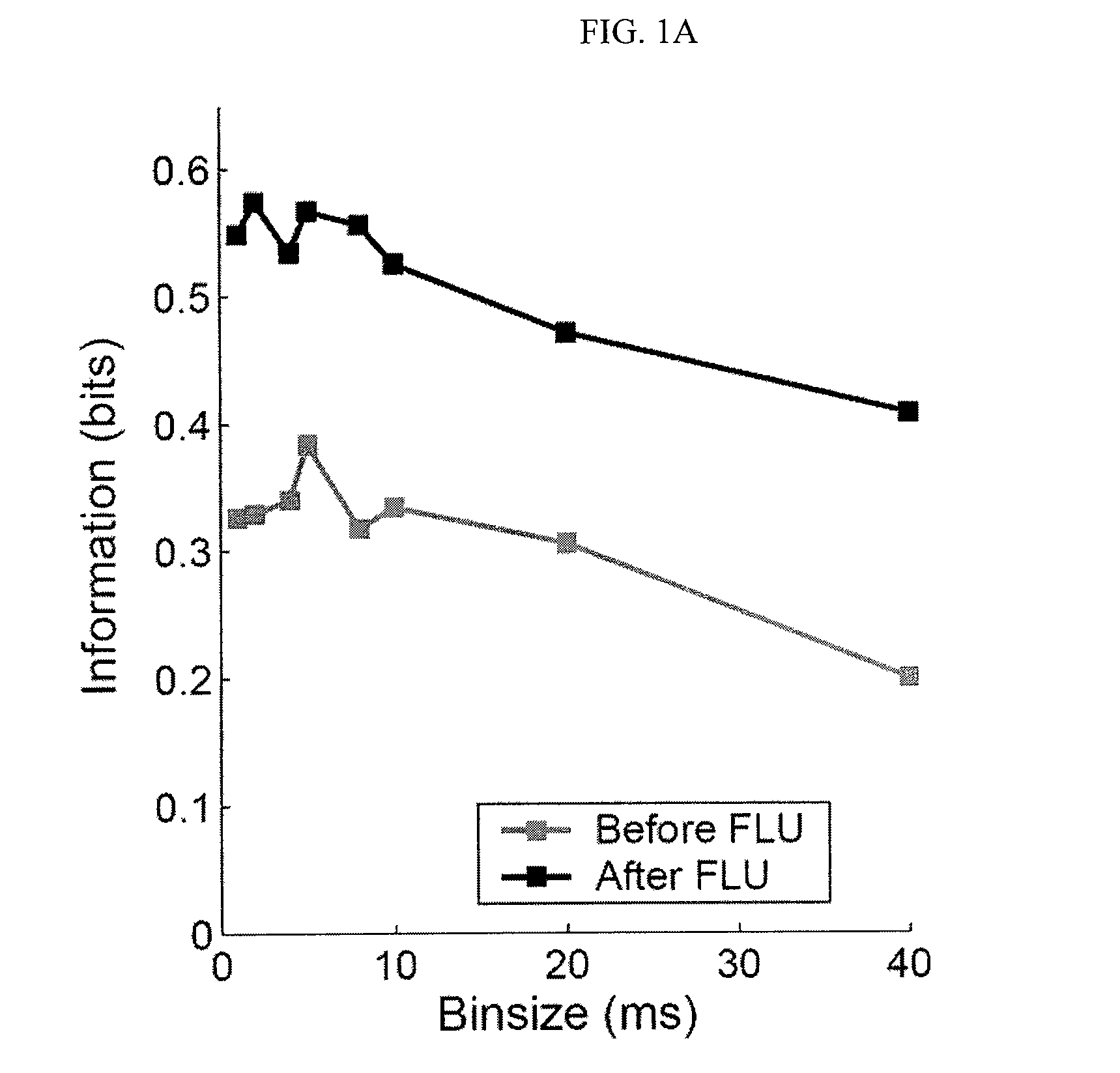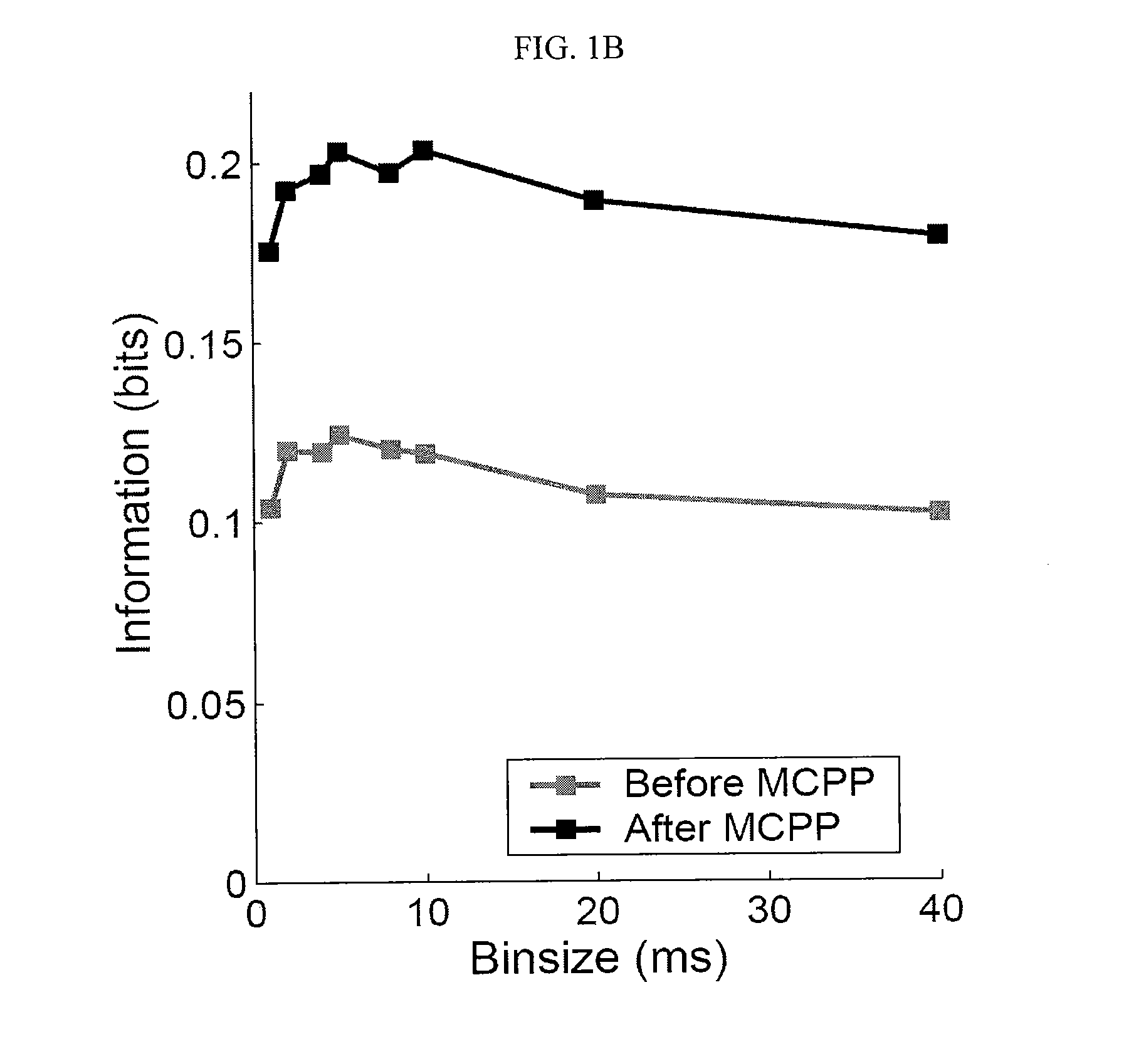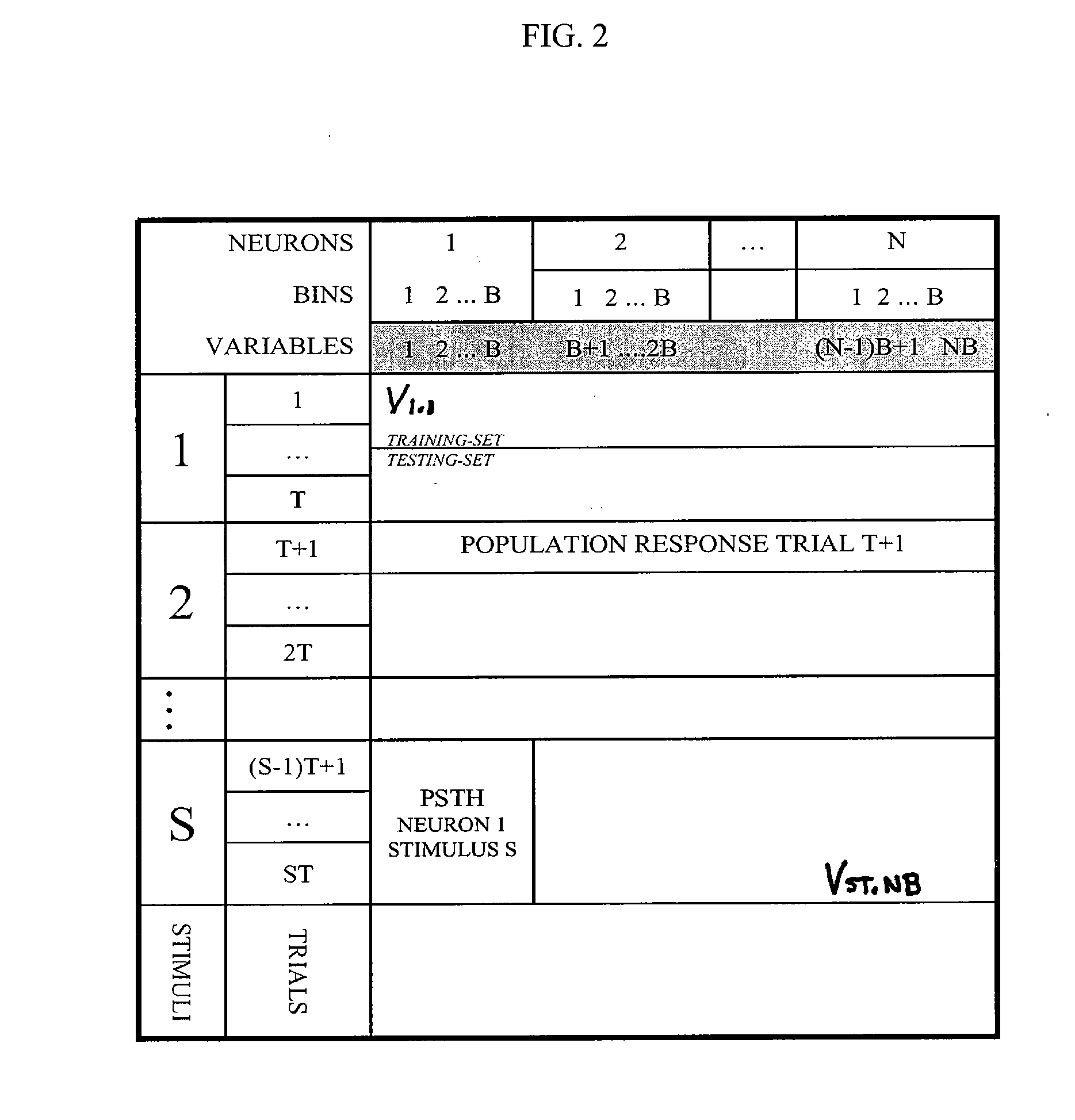Method to Quantitatively Measure Effect of Psychotropic Drugs on Sensory Discrimination
a psychotropic drug and quantitative measurement technology, applied in the field of psychotropic drug discovery and neuroscience, can solve the problems of psychiatric patients not being able to properly process sensory information, largely unknown sensory information processing in the brain of intact animals, and psychiatric disorders represent major health problems, so as to achieve efficient drug screening procedures and increase the informational representation of sensory stimuli.
- Summary
- Abstract
- Description
- Claims
- Application Information
AI Technical Summary
Benefits of technology
Problems solved by technology
Method used
Image
Examples
example 1
[0069]Effect of psychotropic drugs on neurophysiological measures (FIGS. 1A and 1B) Experimental design: Animals were chronically implanted with microelectrode arrays into the paw regions of the rat infragranular primary somatosensory cortex. Animals were allowed one week to recover. On the day of recording, animals were lightly anesthetized with Nembutal (0.25 mg / kg) and the neural signal from each microelectrode was filtered and amplified. Single neurons were discriminated on each channel. The responses of these single neurons were recorded while separately stimulating multiple locations on the paws, before and after administration of FLU or MCPP. The effects of these drugs on somatosensory discrimination were measured in classical neurophysiological terms by quantitatively characterizing spatial and temporal shapes of the neurons' receptive fields in terms of magnitudes and latencies of the neural responses at each location. At the conclusion of the experiment, animals are perfus...
example 2
Effects of Psychotropic Drugs on Somatosensory Discrimination
[0079]Experimental design: The basic idea was to quantitatively measure the amount of information an ensemble of neurons can represent by using the single-trial responses of populations of neurons to identify the location on the body where each stimulus was delivered (classification performance of the ensemble). The more trials for which the stimulus location was correctly identified, the more information the ensemble can represent. To identify locations stimulated using the single-trial neural responses, the PSTH-based method was used. The classification performance of an ensemble was evaluated as bits of mutual information (Foffani et al., 2004). The effect of psychotropic drugs on two main components of classification performance was studied: (A) the spatial component provided by assessing information using a single bin encompassing the entire response (binsize=40 ms, i.e. spike-count) to construct the PSTH and (B) the ...
example 3
PSTH-Based Method (Foffani G, Moxon K A (2004))
[0083]The general dataset organization is shown in FIG. 2. Single-trial neural responses are grouped in sets of S possible stimuli. Each stimulus in the set is repeated T times in the experiment, while the activity of a population of N single-neurons is recorded. For every neuron, a suitable peri-stimulus time-window that includes the response is considered. The window is divided into B bins containing spike counts with a desired temporal precision, in order to preserve timing information relative to the stimulus. In other words, the neural responses are seen as elements of a B-dimensional vector space. Therefore, the dataset is composed of a matrix with T×S rows and B×N columns. The columns are the variables and the rows are the trials, i.e. the realizations of the variables. Every element of the matrix contains the number of spikes recorded from one neuron in one trial in a specific post-stimulus bin.
[0084]Classification methods norma...
PUM
 Login to View More
Login to View More Abstract
Description
Claims
Application Information
 Login to View More
Login to View More - R&D Engineer
- R&D Manager
- IP Professional
- Industry Leading Data Capabilities
- Powerful AI technology
- Patent DNA Extraction
Browse by: Latest US Patents, China's latest patents, Technical Efficacy Thesaurus, Application Domain, Technology Topic, Popular Technical Reports.
© 2024 PatSnap. All rights reserved.Legal|Privacy policy|Modern Slavery Act Transparency Statement|Sitemap|About US| Contact US: help@patsnap.com










